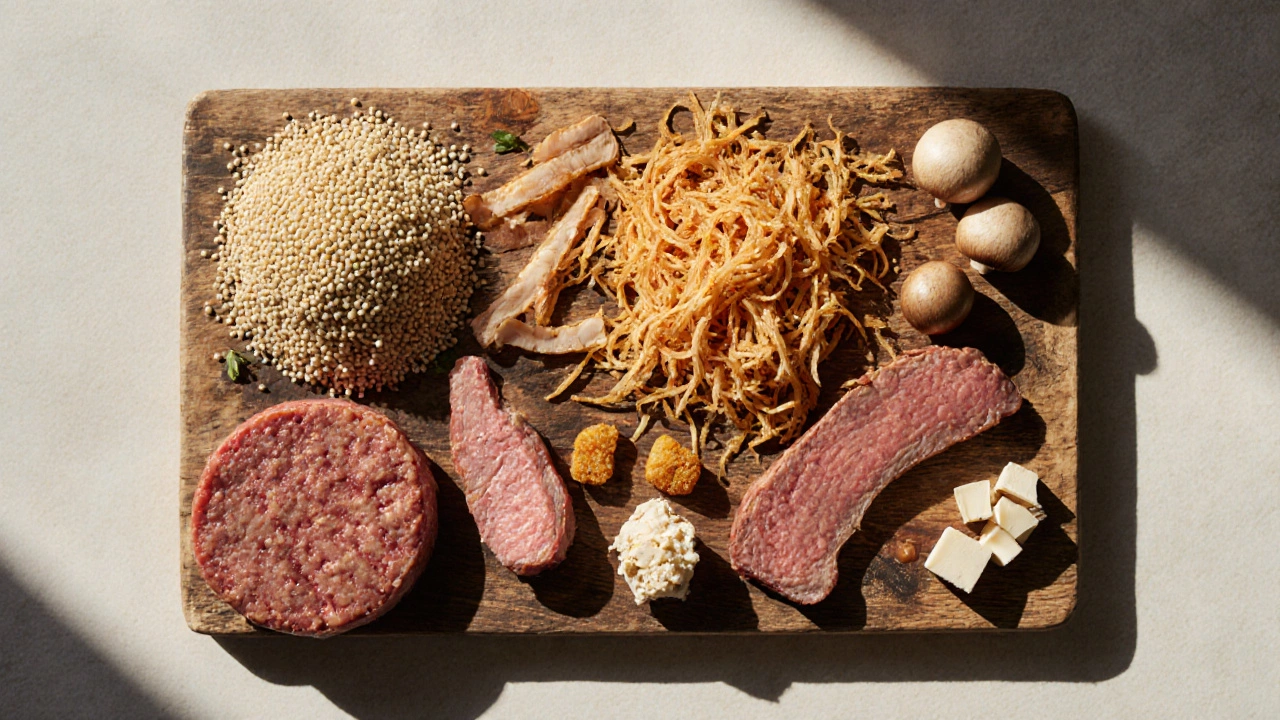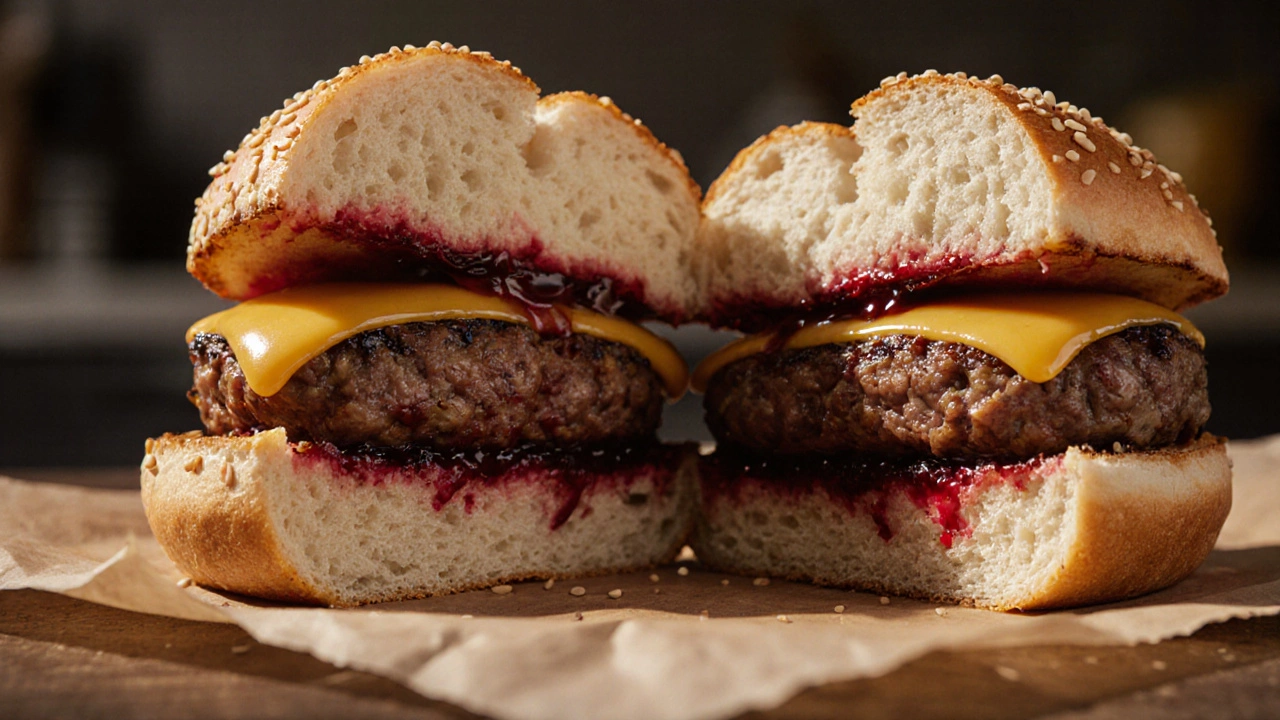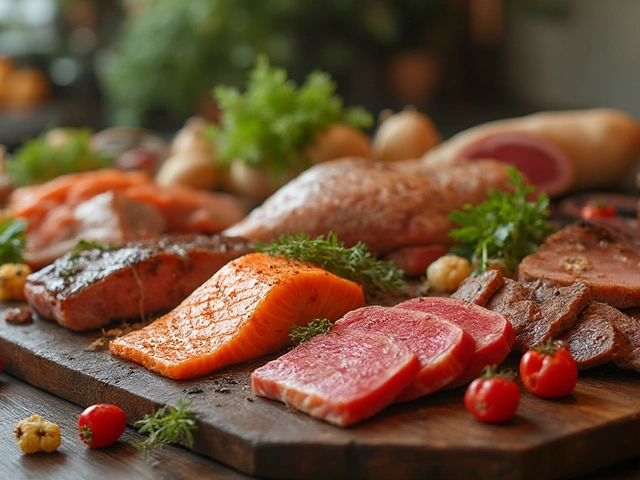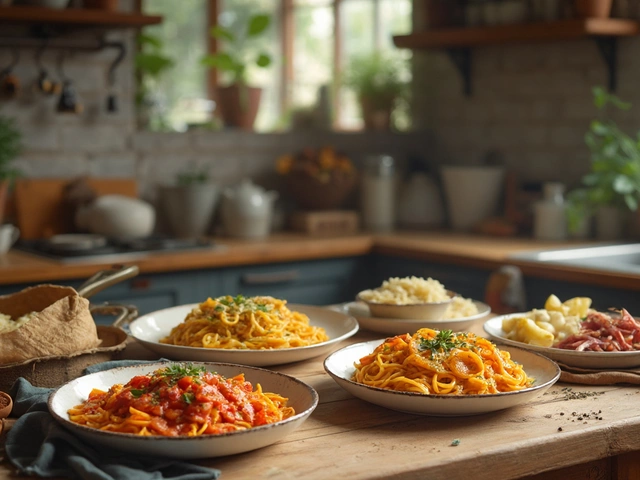Ever bitten into something that gives you that familiar, savory bite of meat yet you know there's no animal on the plate? You're not alone. More people are hunting for foods that deliver the same mouthfeel and depth of flavor without actually being meat. Below you'll discover the biggest meat alternatives, why they tricks your taste buds, and how to use them in everyday cooking.
What makes meat taste “meaty”?
Meat isn't just protein; it packs a cocktail of umami compounds, fat, and a fibrous texture. When you chew, the fat releases aromatic molecules like 5′‑inosinate and 5′‑guanylate, while the muscle fibers give that satisfying chew. Replicating the experience means hitting three targets: umami depth, mouth‑watering fat, and a sturdy texture.
Top foods that taste like meat
- Soy protein - a versatile, high‑protein base that can be textured (TVP) or churned into burgers. It contains about 50g of protein per 100g and carries a mild, nutty flavor that soaks up seasonings.
- Seitan - wheat gluten formed into a dense, meat‑like chew. With roughly 75g protein per 100g, it mimics chicken or beef when baked or sautéed.
- Jackfruit - a tropical fruit whose shredded flesh takes on a pulled‑pork texture once cooked. It's low in protein but high in fiber, making it perfect for tacos or sandwiches.
- Shiitake mushrooms - rich in natural glutamates, they deliver a deep umami punch that can replace ground beef in sauces or stews.
- Mycoprotein (Quorn) - fermented fungus harvested for its dense, chicken‑like texture. It supplies about 14g protein per 100g and a subtle earthy flavor.
- Cultured meat - lab‑grown animal cells that grow on a scaffold, delivering real meat flavor without raising an animal. Still niche, but prototypes already match steak taste.
- Beyond Meat patty - a commercial plant‑based burger built from pea protein, beet juice (for blood‑like color), and coconut oil. Its fat profile mimics animal fat, creating that juicy bite.
- Tempeh - fermented soy cake with a nutty, slightly earthy taste. At 20g protein per 100g, it holds up well in stir‑fries and grills.
Why they work: the science behind the flavor
All the items above share two tricks. First, they are either naturally rich in glutamates (like shiitake and tomatoes) or they are processed with flavor‑enhancing techniques such as Maillard reaction precursors. Second, many incorporate oil or fat mimetics (coconut oil in Beyond Meat, soy oil in seitan) to replicate the slip‑and‑slide sensation you get from animal fat.

Quick comparison table
| Food | Primary source | Protein (g/100g) | Typical texture | Best culinary use |
|---|---|---|---|---|
| Soy protein (TVP) | Defatted soy flour | 50 | Granular, ground‑meat | Chili, Bolognese, tacos |
| Seitan | Wheat gluten | 75 | Chewy, steak‑like | Stir‑fries, kebabs, sandwiches |
| Jackfruit | Tropical fruit | 2 | Shredded, pulled‑pork | Tacos, BBQ sandwich |
| Shiitake mushrooms | Fungi | 3 | Meaty, dense | Gravies, stroganoff |
| Mycoprotein (Quorn) | Fermented fungus | 14 | Chunky, chicken‑like | Curries, nuggets |
| Cultured meat | Lab‑grown animal cells | 20‑30 | Authentic steak | Steak, burgers |
| Beyond Meat patty | Pea protein + oil | 19 | Juicy burger | Grilling, buns |
| Tempeh | Fermented soy | 20 | Firm, nutty | Sandwiches, marinated grills |
How to make the most of meat‑like foods in your kitchen
- Season early. Most alternatives are bland until you add salt, smoked paprika, soy sauce, or nutritional yeast. A quick 15‑minute marinate in a mix of miso, liquid smoke, and maple syrup works wonders.
- Don’t over‑cook. Proteins like soy and seitan become rubbery if left too long. Aim for a golden crust then finish with a splash of broth to keep them moist.
- Add fat. A drizzle of olive oil, a knob of vegan butter, or a spoonful of coconut cream re‑creates the slick mouthfeel of animal fat.
- Use high heat. Grilling, searing, or broiling develops the Maillard reaction, giving that charred, savory note that signals “meat”.
- Combine textures. Mix shredded jackfruit with crisped tofu cubes or toasted chickpeas for a layered bite that mimics mixed‑cuts.

Sample recipes to get you started
- Vegan “Beef” Stroganoff: Rehydrate TVP in vegetable broth, sauté with onions, mushrooms, and smoked paprika, finish with cashew cream.
- Seitan “Steak” with Chimichurri: Slice thick seitan pieces, sear in oil, drizzle with parsley‑garlic chimichurri.
- Jackfruit Pulled “Pork” Sandwich: Simmer shredded jackfruit in BBQ sauce, crisp under the broiler, serve on whole‑grain buns with coleslaw.
- Shiitake “Ground Beef” Tacos: Pulse dried shiitake in a food processor, rehydrate, sauté with cumin, chili, and tomato paste.
When to choose one over another
If you need high protein for a post‑workout meal, go with soy protein or seitan. For a quick, pantry‑ready option, TVP or tempeh are best. When you crave that juicy burger snap, a commercial patty like Beyond Meat or a cultured‑meat prototype (where available) beats everything else. For low‑fat, fiber‑rich dishes, jackfruit or mushrooms are the go‑to.
Frequently Asked Questions
Can meat‑like foods provide enough protein for athletes?
Absolutely. Soy‑based TVP and seitan deliver 50‑75g of protein per 100g, which is comparable to many animal sources. Pair them with legumes, nuts, or whole grains to hit the full amino‑acid profile.
Is cultured meat really “non‑meat”?
Cultured meat is still animal tissue, just grown in a lab. It satisfies the taste‑and‑texture goal but isn’t vegan. If “no animal” is your rule, stick to plant‑based options.
Do these alternatives contain allergens?
Many rely on soy or wheat gluten, both common allergens. Jackfruit and mushrooms are usually safe, but always check labels for cross‑contamination.
How long can I store rehydrated soy protein?
In an airtight container in the fridge, it stays fresh 3‑5 days. Freeze for longer storage - it keeps well for up to three months.
Can I make my own seitan at home?
Yes. Mix vital wheat gluten with water, soy sauce, and spices, knead, then simmer in broth for 30minutes. The result is a cheap, high‑protein meat mimic.









Write a comment